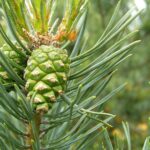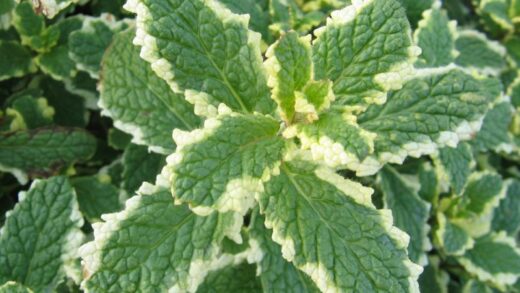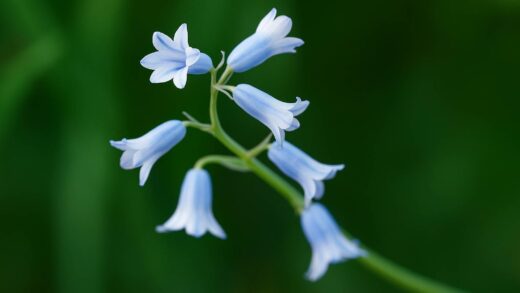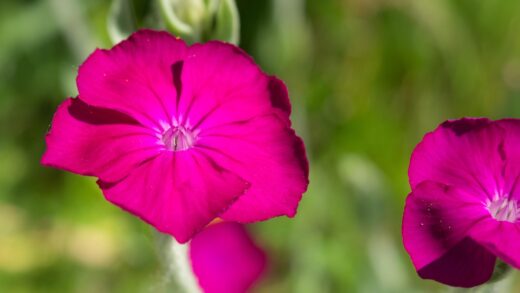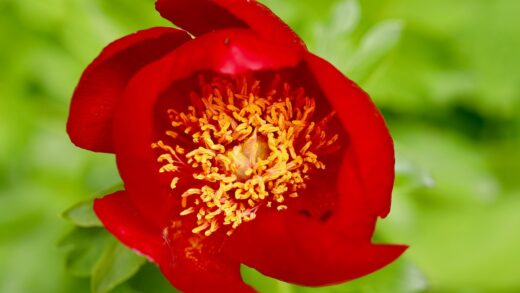Understanding the essence of purpletop vervain is the first step towards its successful cultivation, a journey that rewards the gardener with months of ethereal blooms. This plant, known for its tall, wiry stems and clusters of vibrant purple flowers, brings a unique architectural element and a sense of movement to any garden design. It is not a plant that demands constant attention; rather, it thrives on a foundation of proper placement and benign neglect once established. To truly succeed, one must appreciate its origins in the grasslands of South America, which informs its preference for sun, tolerance for heat, and its need for well-drained soil. Embracing these core characteristics ensures that the plant will not only survive but flourish, becoming a resilient and captivating feature.
Properly caring for purpletop vervain begins with a thoughtful assessment of your garden’s environment, as this will dictate the plant’s long-term health and vitality. Before anything else, consider the soil structure and sunlight exposure in your chosen location, as these are the two most critical factors for success. The plant has a deep-seated intolerance for ‘wet feet,’ meaning soil that remains waterlogged will quickly lead to root rot and the plant’s demise. Therefore, prioritizing excellent drainage is non-negotiable for anyone wishing to cultivate this species. A successful gardener learns to work with the plant’s natural inclinations rather than against them, creating an environment where it can perform to its full potential with minimal intervention.
The life cycle of purpletop vervain also plays a significant role in its year-round care regimen, which shifts with the changing seasons. In spring, the focus is on encouraging new growth and providing a solid foundation for the blooming season ahead. Summer care revolves around maintaining moisture during dry spells and supporting its towering stems, ensuring the floral display remains spectacular. As autumn arrives, the plant’s energy shifts towards seed production, and the gardener’s role changes to preparing it for the colder months. Understanding these seasonal transitions allows for timely and appropriate care, ensuring the plant remains vigorous and continues to grace the garden year after year.
Finally, a key aspect of its care involves recognizing its role within the broader garden ecosystem, as it is a magnet for pollinators. Butterflies, bees, and other beneficial insects are drawn to its nectar-rich flowers, adding another layer of life and movement to your outdoor space. This ecological benefit should inform your maintenance practices, particularly regarding the use of pesticides, which should be avoided to protect these vital visitors. By cultivating purpletop vervain, you are not just growing a beautiful plant; you are contributing to the health of your local ecosystem. This holistic approach to care ensures that both your plant and its surrounding environment thrive in harmony.
Soil preparation and environmental needs
The foundation of a healthy purpletop vervain is unquestionably the soil in which it is planted, making preparation a critical stage of cultivation. This species has a strong preference for soil that drains rapidly, a trait inherited from its native habitat where it often grows in gritty, sandy, or loamy conditions. If your garden has heavy clay soil, which tends to retain moisture, amending it is essential for the plant’s survival. Incorporating materials such as coarse sand, fine gravel, or organic compost can significantly improve the soil structure, creating the well-aerated environment that vervain roots require. This initial investment of effort in soil improvement will pay dividends throughout the plant’s life, preventing the most common cause of failure: root rot.
Beyond drainage, the fertility of the soil is another important consideration, although purpletop vervain is not a particularly demanding plant. It performs best in soil of average to moderate fertility and can even struggle in overly rich conditions, which may lead to excessive leafy growth at the expense of flowers. Amending the soil with a moderate amount of well-rotted compost or manure at the time of planting is usually sufficient to provide the necessary nutrients for the entire season. This approach mimics the natural conditions it is accustomed to, where nutrients are released slowly over time. Avoid the temptation to over-fertilize, as this can produce weak, leggy stems that are more susceptible to flopping over, diminishing the plant’s elegant, upright form.
The surrounding environment plays an equally vital role in the health of purpletop vervain, especially concerning air circulation. Due to its dense clusters of foliage and flowers, the plant can be susceptible to fungal diseases like powdery mildew, particularly in humid or stagnant conditions. Planting it in a location with ample airflow helps to keep the leaves dry and significantly reduces the risk of such issues. Spacing the plants appropriately, typically around 30 to 45 centimetres apart, is also crucial to ensure that air can move freely between them. This simple practice is one of the most effective preventative measures you can take to maintain plant health.
Lastly, while purpletop vervain is adaptable, it has a clear preference for a neutral to slightly acidic soil pH, generally thriving in a range between 6.0 and 7.5. Most garden soils naturally fall within this range, so pH adjustment is often unnecessary. However, if you are aware that your soil is particularly alkaline, a soil test can confirm this, and you may consider incorporating elemental sulfur or organic matter like pine needles to gradually lower the pH. Consistently providing the right soil and environmental conditions from the outset is far more effective than trying to correct problems later on, setting the stage for a robust and floriferous plant.
Watering and feeding throughout the season
Establishing an appropriate watering routine is fundamental to the care of purpletop vervain, particularly during its first growing season. While the plant is known for its excellent drought tolerance once its root system is well-established, young plants require consistent moisture to settle in and develop strong roots. During the initial weeks after planting, water the vervain deeply and regularly, allowing the top few centimetres of soil to dry out between waterings. This encourages the roots to grow deeper into the soil in search of moisture, which is the key to its future resilience. Overwatering is a significant threat, so always check the soil’s moisture level before applying more water to avoid creating soggy conditions.
As the season progresses and the plant matures, its watering needs will decrease significantly, especially if it is planted in the ground. An established purpletop vervain can often thrive with just the available rainfall in many climates, only requiring supplemental irrigation during prolonged periods of drought or extreme heat. When you do need to water, it is far better to provide a deep, thorough soaking once a week than to give light, frequent sprinklings. Deep watering ensures that moisture reaches the entire root zone, promoting a robust and drought-resistant plant. For plants grown in containers, a more frequent watering schedule will be necessary as the soil in pots dries out much more quickly than garden soil.
When it comes to feeding, purpletop vervain follows the principle that less is often more, as it is not a heavy feeder. In most average garden soils, the initial incorporation of compost at planting time will provide sufficient nutrients for the entire growing season. Excessive fertilization, particularly with high-nitrogen formulas, can be detrimental to the plant’s health and appearance. It often results in an overproduction of soft, lush foliage and weak stems, with a noticeable reduction in the quantity and quality of its signature purple flowers. This leggy growth is also more prone to damage from wind and rain.
If your soil is particularly poor or sandy, a single, light application of a balanced, slow-release granular fertilizer in the early spring, just as new growth emerges, can be beneficial. This provides a gentle boost of nutrients to support healthy development without overwhelming the plant. Alternatively, a top dressing of compost around the base of the plant in spring serves a similar purpose, improving the soil structure while slowly releasing essential nutrients. Always avoid applying fertilizer late in the season, as this can stimulate new growth that will be vulnerable to damage from the first frosts.
Managing growth and flowering
To maintain the desired airy and elegant structure of purpletop vervain, some strategic management of its growth habit can be beneficial, starting early in the season. When the young plants are about 20 to 30 centimetres tall, you can practice a technique known as ‘pinching back’. This involves simply removing the top few centimetres of the main growing stem with your fingers or a pair of clean secateurs. This action encourages the plant to branch out from the lower nodes, resulting in a bushier, more compact plant with a greater number of flowering stems. While not strictly necessary, this practice can create a fuller appearance and prevent the plant from becoming too tall and sparse.
Throughout the long blooming period, which typically lasts from early summer until the first frosts, the practice of deadheading can prolong the floral display. Deadheading is the process of removing the spent flower clusters once they have faded and started to turn brown. This prevents the plant from expending its energy on seed production and instead redirects that energy into producing a new flush of blooms. Regular deadheading can significantly extend the flowering season, ensuring a continuous supply of vibrant purple colour in your garden. It also helps to maintain a tidier appearance, although some gardeners prefer to leave the seed heads for winter interest and to provide food for birds.
As a tall plant, reaching heights of up to two metres, purpletop vervain can sometimes require support, especially in windy or exposed locations. Its stems are naturally strong and wiry, but in certain conditions, they may be prone to bending or breaking. If support is needed, it is best to use unobtrusive methods that preserve the plant’s naturalistic appearance, such as using twiggy pea sticks or thin bamboo canes placed strategically within the clump. It is important to install any supports early in the season, allowing the plant to grow up and through them, which effectively hides the structure and provides more natural-looking support.
Managing the self-seeding nature of purpletop vervain is another key aspect of its long-term care, as it can spread enthusiastically in ideal conditions. While this can be a desirable trait for naturalistic or cottage-style gardens, it may become problematic in more formal settings. If you wish to control its spread, the most effective method is to deadhead the majority of the spent flowers before they have a chance to set and disperse seed. You can always leave a few flower heads to mature if you want some new seedlings for the following year, which can then be easily transplanted or thinned out as needed in the spring.
Seasonal adjustments and end-of-year care
As the vibrant growth of summer begins to fade and the cooler temperatures of autumn set in, the care routine for purpletop vervain requires a significant shift in focus. The primary goal during this period is to prepare the plant for the upcoming winter dormancy. It is crucial to resist the urge to cut back the stems after the first frosts, even though they will turn brown and dry. These standing stems provide essential protection for the plant’s crown, the point at which the roots and stems meet, shielding it from the harshest winter cold and excessive moisture. This structural framework also offers valuable winter interest in the garden, catching frost beautifully and providing shelter for beneficial insects.
In regions with cold winters, providing additional protection for the crown is a wise precaution, especially for younger plants. After the ground has cooled but before the first hard freeze, apply a generous layer of dry mulch around the base of the plant. Materials like shredded leaves, straw, or pine bark are excellent choices as they help to insulate the roots from extreme temperature fluctuations. This mulch layer should be about 10 to 15 centimetres deep but be careful not to pile it directly against the stems, as this can trap moisture and encourage rot. This simple step can make a significant difference in the plant’s ability to survive the winter and return vigorously in the spring.
Throughout the autumn, you should gradually reduce any supplemental watering you have been providing. As the plant’s growth slows and it enters dormancy, its water requirements diminish significantly. Allowing the soil to become excessively wet during the autumn and winter months is one of the greatest threats to the plant’s survival, as the combination of cold and dampness is a primary cause of root and crown rot. Let nature take its course, and only intervene with watering if there is an unusually prolonged and dry autumn spell. In most temperate climates, the natural rainfall during this period will be more than sufficient.
The final act of seasonal care takes place in late winter or early spring, just as the threat of severe frost has passed and new growth begins to emerge at the base of the plant. This is the correct time to cut back the old, dead stems from the previous year. Using a sharp pair of secateurs or shears, prune the stems down to about 10 to 15 centimetres from the ground. This tidies up the plant, removes the old growth, and makes way for the new, vigorous shoots that will soon develop. This annual cycle of preparation and renewal is key to the long-term health and perennial performance of purpletop vervain.
Common challenges and solutions in verbena care
Despite its reputation as a low-maintenance plant, purpletop vervain can occasionally encounter challenges, with fungal diseases being the most common issue. Powdery mildew is perhaps the most frequent ailment, presenting as a white, dusty coating on the leaves, particularly during periods of high humidity and warm temperatures. The best solution for this problem is prevention, which hinges on providing excellent air circulation. Ensure plants are not overcrowded and are situated in an open, breezy location. If mildew does appear, you can often manage minor infections by removing the affected leaves promptly. Avoid overhead watering, which wets the foliage and creates a perfect environment for fungal spores to germinate.
Another challenge that gardeners may face is the plant’s tendency to become ‘leggy’ or floppy, where the tall stems are unable to support themselves and fall over. This issue is almost always a result of improper growing conditions rather than a disease. The most common causes are insufficient sunlight, overly rich soil, or excessive fertilization, all of which encourage weak, rapid growth. To solve this, ensure your vervain is planted in a location that receives at least six to eight hours of direct sunlight per day. Avoid adding high-nitrogen fertilizers and stick to amending the soil with compost once at the start of the season. If flopping persists, consider the pinching technique early in the season to encourage a sturdier, bushier structure.
While generally resistant to pests, purpletop vervain can sometimes attract sap-sucking insects such as aphids, especially on new, tender growth. These small insects can usually be managed without resorting to harsh chemical pesticides, which is important for protecting the many pollinators that visit the flowers. A strong jet of water from a hose can often be enough to dislodge a small infestation. For more persistent problems, an application of insecticidal soap can be effective, ensuring you follow the product instructions carefully. Promoting a healthy garden ecosystem with a diversity of plants will also attract natural predators like ladybirds, which will help to keep aphid populations in check.
Finally, a lack of flowering can be a frustrating challenge for any gardener, and with purpletop vervain, the cause can usually be traced back to a few key factors. The primary reason for poor blooming is insufficient sunlight, as this plant requires a full day’s sun to produce its abundant flower clusters. Another potential cause is excessive fertilization, which, as mentioned, promotes foliage growth at the expense of flowers. Lastly, in some cases, a plant may be putting its energy into establishing a strong root system during its first year, with a more prolific floral display to follow in its second year. Patience, combined with ensuring the fundamental requirements of sun and lean soil are met, will almost always resolve this issue.







